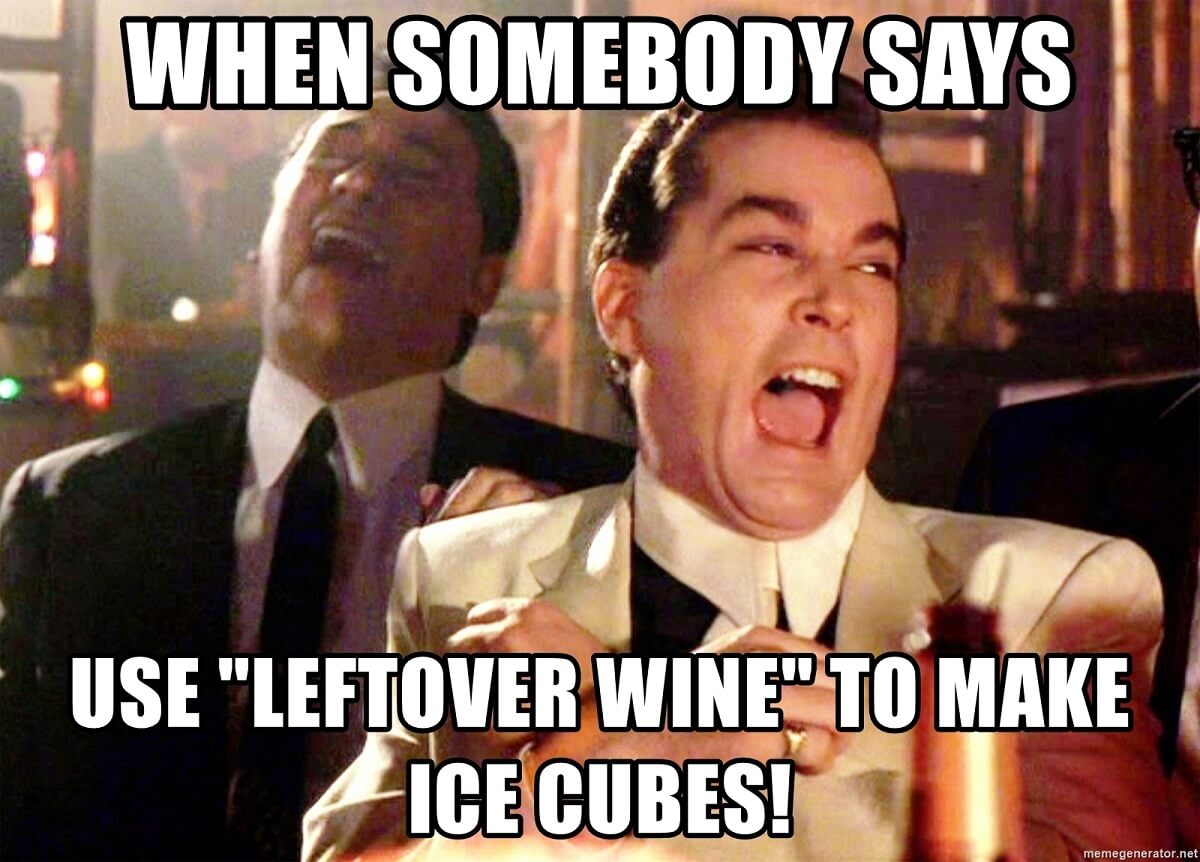While leftover wine is the subject of many jokes (see the meme below), a question we are often asked is “How do you keep a wine fresh after opening it”?
Read on for our tips on how to store open wine, it’s actually quite simple!
While a little air is often good for wines (you’ll often see us recommending decanting or letting the wine breathe), too much turns it into vinegar. Preserving an opened wine is all about slowing down the oxidation process.
The steps outlined below will help your bottle last about a week without it degrading too much. And if you need an opened bottle to last even longer than that, read all the way to the end for one surprisingly effective option. (Of course, you can also remove the need to keep opened wine fresh if you’re willing to check some other formats like cans and box wines.)

If you want your leftover wine to last – and still taste good – for more than day here are the two steps to slowing down the oxidation process.
Step 1 in Keeping Your Open Wine Fresh: Remove the Oxygen
Oxidation happens when oxygen comes in contact with the wine, so the first thing to do is to try and limit this as much as possible.
There are a number of options here:
- You can simply pour the leftover wine into a smaller bottle (375ml for example). If you fill it to the top and cap it, you’ve just limited the amount of oxygen that come in contact with the wine. However, unless you always drink exactly half a bottle or have a wide array of bottle sizes, this isn’t really practical.
- Some people swear by those vacuum pump gizmos to remove oxygen from a bottle, but we’ve had very poor results with those and do not recommend them.
- An easier method (and our preferred process) is to just buy a spray bottle of argon gas. Because argon is denser than air, it displaces oxygen. By squirting some into the opened wine bottle and capping it you’ve basically created a protective barrier keeping oxygen away from the wine. A $10 spray bottle contains enough argon for at least a couple months under normal use.
- Finally, if you’re trying to keep a sparkling wine fresh (and bubbly), check out the Capabubbles.
Step 2 to Preserve Open Wine: Slow Down the Oxidation
Once a wine has been opened and exposed to oxygen, the oxidation process is on and there’s really not much you can do to stop it. Removing the oxygen (Step 1) will help but you will also want to slow down the process that has already begun.
This is surprisingly simple – just stick it in the fridge! Cold temperatures slow down oxidation, so put that opened bottle (yes red wines too) in the refrigerator. Just take your reds back out a couple hours before you want to drink them so they can warm back up.
And that’s it for our 2-step process on how to store open wine!
One final option that is more expensive, but can be great when you really want to preserve a special bottle, is the Repour. This wine saver actually has a material inside the stopper that actively removes oxygen from the bottle and from the wine itself, stopping the oxidation process completely. The downside is that you have to buy a new one for each bottle you want to preserve, so while they are very effective at keeping your wine fresh for weeks or even months at a time, they are not very cost effective. (In fact, these work so well you’ll probably need to decant the wine again when you re-open it.)
Want more great content? Sign up for our Free Guide: How to Drink Great Wine…Without Breaking The Bank
Would You Like To Save This?
We won't send you spam, unsubscribe at any time.





